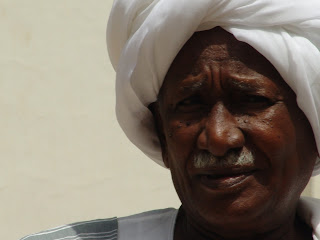A triumphant President Bashir
landed in al-Kurmuk on the first day of Eid al-Adha, 6 November, flanked by his
defence minister and his security director, and, of course, the crucial
minister of presidential affairs, Bakri Hassan Salih. The four gentlemen were
then joined by a second cohort of military personnel including the caretaker
governor of the Blue Nile and the force commander of the Sudan Armed Forces
(SAF) in the state. The President and his entourage entertained the SAF
contingent that had subdued al-Kurmuk, the major stronghold of the rebel Sudan
People’s Liberation Movement in North Sudan (SPLM-N), and declared the town
‘liberated’. While under the control of the SPLM the town was also referred to
as ‘liberated’. The area and its inhabitants suffered the two variants of
‘liberation’ several times during the course of the 1983-2005 civil war. The
first cycle was in November 1987 when the Sudan People’s Liberation Army
(SPLA), under the leadership of the late John Garang, managed to gain control
over the town and its less famed neighbour, Gaisan. In the same year the SPLA
mounted its first sustained campaign in South Kordofan after it had signalled
its military presence in the region with the 1985 surprise raid on al-Gardud. At
the time, Sadiq al-Mahdi was the master in Khartoum presiding over a coalition
government that joined the National Umma Party (NUP) and the Democratic
Unionist Party (DUP). In parliament, the opposition National Islamic Front
(NIF) headed by Hassan al-Turabi grilled the NUP over the military defeat in
Kurmuk. Exasperated, Sadiq al-Mahdi’s captain, the late Omer Nur al-Daim, told
the house, so what if al-Kurmuk fell, Berlin fell, not a particularly felicitous
parallel I suppose. Similar to today’s al-Intibaha the NIF press back then,
al-Raya, al-Sudani and Alwan, ridiculed the hesitant peace efforts of the NUP
and the DUP as mere ‘capitulation’ to the SPLA and whipped up public support
for the war effort.
The SAF armed with Libyan
weapons managed to reclaim al-Kurmuk in December 1988. The town continued to be
the object of competition between the SPLA and the SAF until the former managed
to ‘liberate’ it again in 1997. This time around, there was no opposition in
the parliament to grill the government of President Bashir and Hassan al-Turabi
over the defeat. The event was largely ignored. When the Comprehensive Peace
Agreement (CPA) was signed in 2005 al-Kurmuk was still under the control of the
SPLA. The April 2010 elections delivered the governorship of the Blue Nile
state to the SPLM’s Malik Agar. Later in the year, he declared the transfer of the
state capital from al-Damazin to al-Kurmuk. The decision was never implemented,
possibly due to stiff resistance from Khartoum and the lobbying of the Damazin
merchants and big landowners. The pro-SPLM Khartoum newspaper Ajras al-Hurriya professed
that al-Kurmuk, the state capital to be, would soon become “Africa’s Dubai”, a
regional hub of commerce and tourism. Well, it didn’t.
True to custom, President
Bashir promised the few civilians who were there to attend his Eid al-Adha
address in al-Kurmuk beside the troops that rehabilitation and development
under government aegis would soon soothe the war wounds of the town, now that
it has returned to the bosom of the nation. In the heat of the moment, President Bashir
told his troops to bring in Malik Agar alive and threatened South Sudan with
war in case it continues to support the rebels of the Blue Nile and South Kordofan.
Instead of haraka (Arabic for movement) the President kept saying hashara
(Arabic for insect), to the delight of the audience. The SAF, he declared, has
crushed the hashara for good, probably not I presume.
The President, well informed by
his experience as the SAF commander in Mayom, Upper Nile, in the 1980s,
probably has a better grasp of the virtual invincibility of guerrillas in the
Sudanese war zones. He controlled Mayom once, but only Mayom. The SAF today has
Kurmuk in its grasp; so what, Omer Nur al-Daim could have asked.




No comments:
Post a Comment